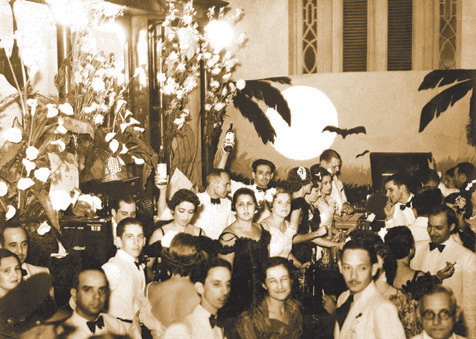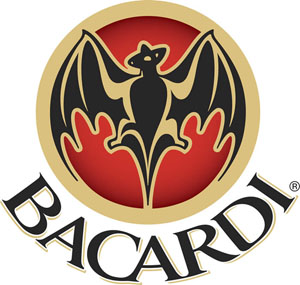The history of the Bacardi company started when Facundo Bacardi Masso was born in a Spanish town of Sitges (Catalonia) in October 1814. In the 1820s his older brothers moved to a port city Santiago de Janeiro, trying to escape from the recession and yellow fever, and became successful merchants in the new area. In 1930 they were joined by their brother Facundo, who was just 15 then, and by 1938 he’d saved enough money to open his own wine trade company.
In the early 1940s Facundo Bacardi met a young dona Lucia Victoria Moro, a granddaughter of a French coffee grower, and on August 5, 1943 they married. The life of a young couple was full of joy and happy moments, but the idyll was broken at once when in 1852 two earthquakes, which happened almost in a row, nine days one after another, and totally razed Santiago. The disaster nearly ruined don Facundo’s business, but he was still caring about the community during that period and was supplying the city with food.
After the breakdown the Catalonian decided to start it all over again. Sugar industry in the Carribean boosted and produced large amounts of syrup, which is the basis element of rum. The cheap and not refined drink was popular mainly among the poor. The Royal Development Council of Spain was offering a grant to a company which would elaborate new technologies for making rum to use the giant reserves of syrup.
In 1855 don Facundo started to experiment with the production technology. He cooperated French confectioner Hose Leone Butillier, and so got an access to a copper distilling tank, used for making aroma essences for candies and pastries. Don Facundo spent many days experimenting with distilling process stages, and at last he got a pure, light and smooth drink.
On February 4, 1862 года three partners (Bacardi brothers and Boutillier) founded a new company Bacardi Boutilie & Co (1862-1874).
When dona Amalia visited the Bacardi distillery for the first time, she found a colony of fruit bats that lived in the rafters. The newly-established company needed a logo, so the woman suggested using the bat as the symbol for his rums. According to the Cuban legends, this animal symbolizes strong health, good luck and family prosperity.
On April 12, 1862 at the city clerk’s office of Santiago de Cuba they registered the official name of the company and its trademark. The partners now were selling the rum, which became known by people as El Ron Del Murcielago or «the Rum of the Bat.»
The only daughter of don Facundo Bacardi — Amalia Lucia — married a Frenchman Anri Shug, who was called don Enrique by Cubans, became the third president of Compania Ron Bacardi S.A. by picking up the baton from his brother-in-law. He built Bacardi headquarters in the centre of Old Havana and opened the rum distillery in New York. In 1919 the company changed its name to Compania «Ron Bacardi» S.A. In the beginning of the 20s the Bacardi rum became yet more popular and desired with the start of prohibition period in the USA. Now Cuba was an outlet for Americans who had money and wanted to soak their holidays or just weekends with top-rated alcohol.
The heads of the company had always supported the politician movement of the country and were against totalitarianism. In the second half of the 50-ies they helped Fiedel Castro, but still, understood how high the risks were and so moved 10% of their business to the Bahamas in 1958. This helped to save some of their assets when the private property of the country was expropriated.
Still, the company managed to survive. In 1979, when Bacardi became No.1 in terms of volume sold annually on the global alcohol market, it sold $143.1 million liters every year. In 1993 the company acquired the Martini & Rossi company, one of the top largest wine distillers and distributers.
The Bacardi family is still monitoring the production process at their distillers. Nearly after 50 year since its formula was created, the drink is still distilled according to the recipes, developed by don Facundo in Satntiago de Cuba.
The Bacardi group owns more than 100 alcohol brands including Grey Goose vodka, Dewar’s whisky, Bombay Sapphire jinn, Eristoff vodka, Cazadores tequila and Martini vermouth.
• Now the Bacardi rum is sold in more than 175 countries with its annual volume of more than 20 million boxes, Bacardi is one of the bestsellers in the alcohol drink sector, North and South America as well as Europe being the biggest markets for the brand.
• Emilio Bacardi Moro, the oldest son of Facundo and the second president of the company, was a famous Cuban politician and a statesman. After the victory of the first Cubian Revolution (1898) he became the first democratically elected mayor of Santiago and it was then that Cuba became the Island of Liberty. To commemorate the date the company introduced the number one cocktail around the globe called Cuba Libre – Bacardi-Coca-Cola.
• The company has another symbol, which is a royal coconut palm. When planting the palm tree, a son and a namesake of the brand’s founder, Facundo Jr. said, “The Bacardi Company will thrive for as long as this tree is alive”. In 1960, the palm tree withered, the distillery and the company’s accents were expropriated by Fiedel Castro’s government and the family got extradited from the island.
• Novelist Ernest Hemingway mentioned Bacadri rum in his works and made the drink globally known. In his honor the company issued a number of articles.
• In the 20s the market was flooded by fake Bacardi drinks and the new head of the company, Facundito Bacardi, suggested to launch a promotional campaign taglined «Siempre imitado, jamas igualado” (Widely imitated, but never duplicated).
• The most popular drinks around the globe were created with Bacardi – Cuba Libre (1899), Daiquiri (1896), Mojito (1930), Pina Colada (1954).
• 130 Cuba Libre (Bacardi-Cola) cocktails are made every second.






